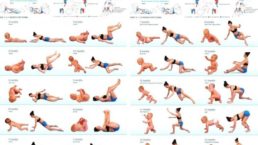What is Wellness? – A Physiotherapist Perspective
The phrase Wellness in Perth has surged in popularity over the last decade. Currently “Wellness” is a common household phrase used on food packaging, exercise equipment and cosmetics.
With the increase in practitioners and “Wellness Centres” in Perth, it is important to re-evaluate what Wellness means to health as well as how it fits into a physiotherapy treatment perspective.
According to medical dictionaries; Wellness is defined by a state of well-being where there is optimal functioning of both mental and physical health. This is achieved when an individual is able to live life to their fullest potential with the avoidance of unhealthy practices. At Perth Wellness Centre our definition of Wellness is used to describe a balance of Chemical, Emotional and Physical states, as these three are the major factors that affect overall well being.
In the Physiotherapy world, the Biopsychosocial framework is used to describe Physical, Chemical and Emotional. The framework was initially developed by George L. Engle and states that the intricate nature of biology, psychology and social factors will determine the cause, manifestation and outcome of overall well being and disease. This framework of thinking was used as a proposal to guide practitioners to look outside the traditional biomedical model, as there is always more to look into than just treating the signs and symptoms of patients.
But what about Physiotherapists?
A Wellness practitioner does not just treat the “symptoms” but rather attempts to find the “root cause of a condition”. In the case of the badly sprained/painful lower back, a Wellness practitioner may look at firstly treating and rehabilitating the lower back and then move on to find any drivers of the condition. They will also aim to prevent any damage to the knees, hips, shoulders and neck. Should the drivers of the condition be emotional or purely chemical, appropriate advice and onward referrals will be given. Expect a short term solution and a long term plan from a Wellness Practitioner.
From a Physiotherapy point of view the ideal state of Wellness, whereby an individual can live pain and disease free, may be difficult to achieve and even unrealistic in some cases. The concept of Wellness and Physiotherapy for an elderly individual going through the end stages of life therefore will be very different from a teenager wanting to compete in high-level sports, or that of a middle-aged person wanting to be pain-free and prevent future ailments.
The definition of Wellness for the elderly could mean being able to perform meaningful tasks as well as activities of daily living such as playing with grandchildren, great mobility, self-care as well as being able to communicate with loved ones.
In the younger population Wellness would be living life to the fullest potential at the same time taking into account preventing pain and diseases.
Even then Wellness in the disabled population may take on the form of being able to carry out meaningful tasks, to maintain current condition, to engage with peers and to spend time with loved ones.
As a healthcare professional in Perth Western Australia, I do believe that having a vision for health and wellness should be instilled in all individuals.
Despite the concept of Wellness having a different form in our minds, we should all have a plan for health.
By Wayne C. Sun Perth Physiotherapist
Our Chiropractor Cheran Ruben has previously written about Wellness from a physical, Chemical and Emotional stressors angle.
References
ENGEL, G. L. (1980). The clinical application of the biopsychosocial model. The American Journal of Psychiatry: Official Journal of the American Psychiatric Association. 137, 534-544.
MAIN, C. J., SULLIVAN, M. J. L., & WATSON, P. J. (2008). Pain management: practical applications of the biopsychosocial perspective in clinical and occupational settings. Edinburgh, Churchill Livingstone.
Related Posts
What is Frozen Shoulder and How to Treat It
19 June 2017
Adhesive Capsulitis or frozen shoulder can be both very painful and movement restrictive for the shoulder joint. Whilst this may be a term familiar to some, it is often poorly understood and misdiagnosed in the field of sports medicine.
0 Comments4 Minutes


